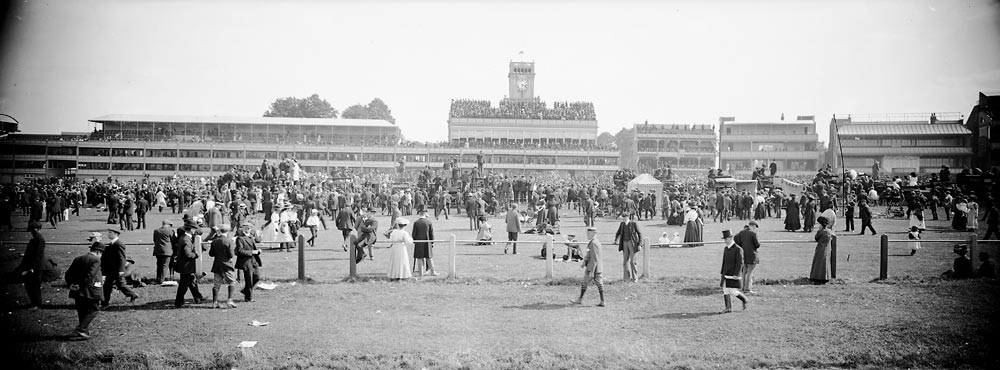Alfred Hind Robinson was born at Osmanthorpe Hall in Leeds, England in 1864, the son of Col John Robinson (and his wife Jane) a wool merchant working for John Vance & Co of Leeds. Educated at Eton, he served as a lieutenant in the 11th Hussars (Prince Albert’s Own) between 1884 and 1887 and also served in the Great War. In 1894 he became a member of the Scarborough District Council, later becoming a Justice of the Peace in the North Riding, Yorkshire in 1903. Settling in Scarborough in the early 1900s he soon became one of the pioneers of panoramic photography and shot over 2000 panoramas between 1903 and 1930 using a special form of carbon printing known as the autotype process. His individualistic style, aided buy a clockwork Kodak panoramic camera, was recognised by the British Railways companies who bought many of his images for display purposes in their First Class carriages.

Between 1915 and 1916 he served in the Royal Defence Corps and from 1924 was chairman of the Pickering Lythe East Petty Sessions. He married his wife Mabel in 1893, the daughter of John Mackay Plews of Fencote Hall, Bedale, Yorkshire. The couple moved to Derwent House, West Ayton near Scarborough in 1909 and it was from here that he produced the bulk of his work. His travel subject took him all over England, Scotland and Ireland and some parts of Northern Belgium and Holland extensively covering seaside resorts, golf links, castles, abbeys, cathedrals and coastlines.

Very little is known about Robinson as his photography was very much a hobby and has rarely been seen outside the UK. Very much a pillar of society, Robinson was a local magistrate for much of his life and regarded photography much as he did his other recreational pursuits of hunting, fishing and shooting.
Alfred Hind Robinson died in 1950 and The Hulton Picture Library purchased his collection in 1951.




circa 1910: A woman standing on rocks at The Strid during a walk through Bolton Woods, near Bolton Abbey in Yorkshire. (Photo by Alfred Hind Robinson/A H Robinson/Hulton Archive/Getty Images)






